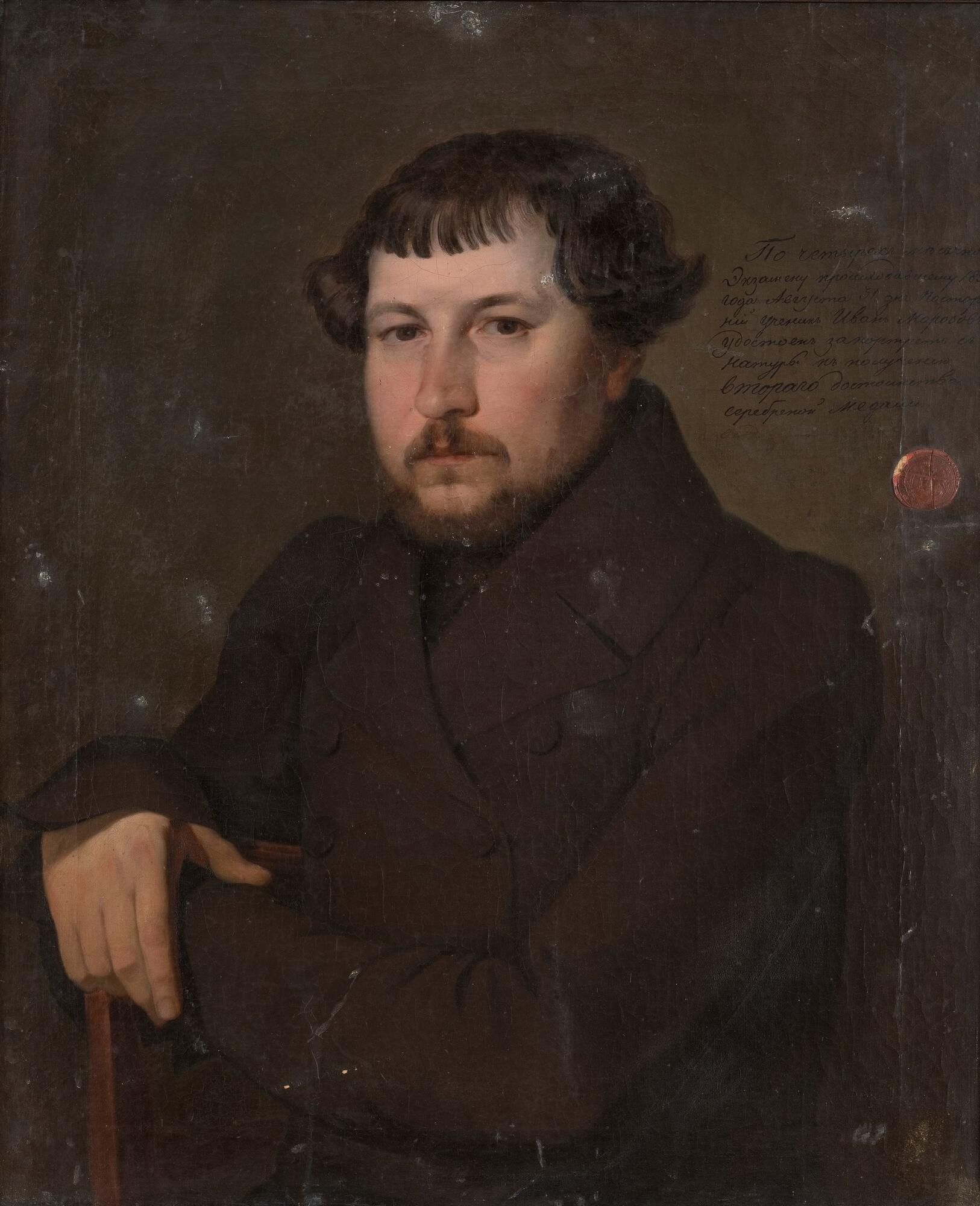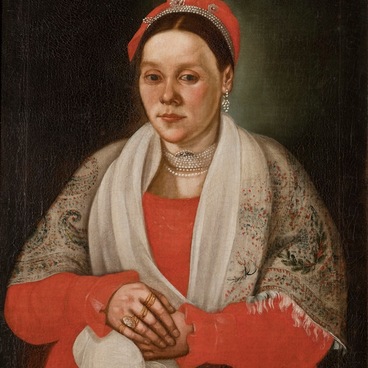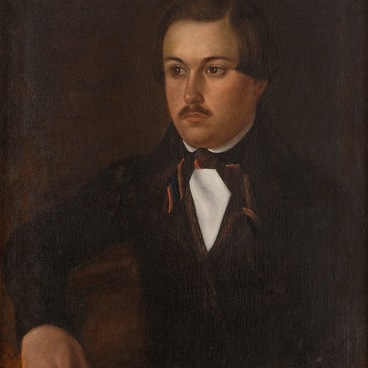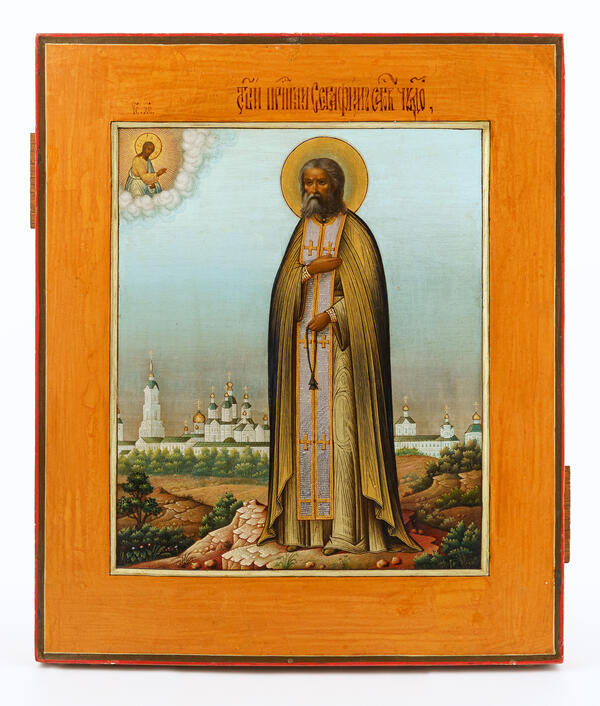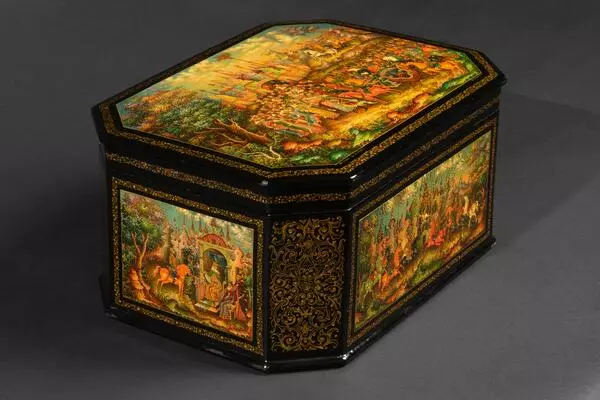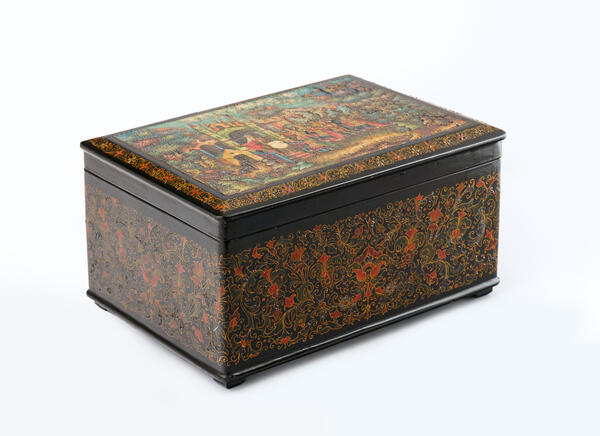The portrait of merchant Fedor Suzdaltsev was painted by artist Ivan Morozov in 1835. In the picture, Suzdaltsev is dressed in a dark double-breasted coat with raised and “fluffed” shoulders; he wears the merchant hairstyle: straight bangs are cut short and wavy hair covers his ears. The merchant leans on the back of his chair with his right hand. Morozov chose a dark-brown background, traditional for merchant portraits, which does not distract attention from the portrayed person.
In the 1820s and 1830s, the canonical rules by which artists depicted merchants were fully formed. A flattened pectoral image, highlighted by a clear outline, was placed on a dark background. The portrayed were painted statically, often in traditional merchant attire and with attributes that indicated their class affiliation.
In the 1840s, these principles persisted, but merchants’ portraits began to depict various details more often, such as the armrests of chairs and armchairs or the edge of a table, on which the models of the paintings were leaning. In the late 1840s and 1850s, merchant portraits acquired a certain affectation. There was an accentuated ceremonialism in them: craftsmen specially portrayed merchants in a traditional attire. By the 1860s, the genre began to decline, and then it ceased to exist altogether.
Fedor Suzdaltsev was one of the representatives of the famous Murom merchant dynasty. In the archive documents of 1849, he is listed as a merchant of the 2nd guild, and in 1865 — of the 1st guild. Suzdaltsev was a “hereditary honorary citizen”, and from 1857 to 1859 (according to some sources, until 1860) he held the position of the mayor of the town.
Ivan Morozov was an icon painter in Murom. In the early 1830s, he moved to St. Petersburg and became a “non-degree student” of the Imperial Academy of Arts. After training, Morozov stayed in St. Petersburg, where he received a teaching position at the Law School. The portrait displayed at the exhibition is now the only known painting by the master.
There are preserved commemorative inscriptions on the painting. One of them was made by Morozov himself:
In the 1820s and 1830s, the canonical rules by which artists depicted merchants were fully formed. A flattened pectoral image, highlighted by a clear outline, was placed on a dark background. The portrayed were painted statically, often in traditional merchant attire and with attributes that indicated their class affiliation.
In the 1840s, these principles persisted, but merchants’ portraits began to depict various details more often, such as the armrests of chairs and armchairs or the edge of a table, on which the models of the paintings were leaning. In the late 1840s and 1850s, merchant portraits acquired a certain affectation. There was an accentuated ceremonialism in them: craftsmen specially portrayed merchants in a traditional attire. By the 1860s, the genre began to decline, and then it ceased to exist altogether.
Fedor Suzdaltsev was one of the representatives of the famous Murom merchant dynasty. In the archive documents of 1849, he is listed as a merchant of the 2nd guild, and in 1865 — of the 1st guild. Suzdaltsev was a “hereditary honorary citizen”, and from 1857 to 1859 (according to some sources, until 1860) he held the position of the mayor of the town.
Ivan Morozov was an icon painter in Murom. In the early 1830s, he moved to St. Petersburg and became a “non-degree student” of the Imperial Academy of Arts. After training, Morozov stayed in St. Petersburg, where he received a teaching position at the Law School. The portrait displayed at the exhibition is now the only known painting by the master.
There are preserved commemorative inscriptions on the painting. One of them was made by Morozov himself:
